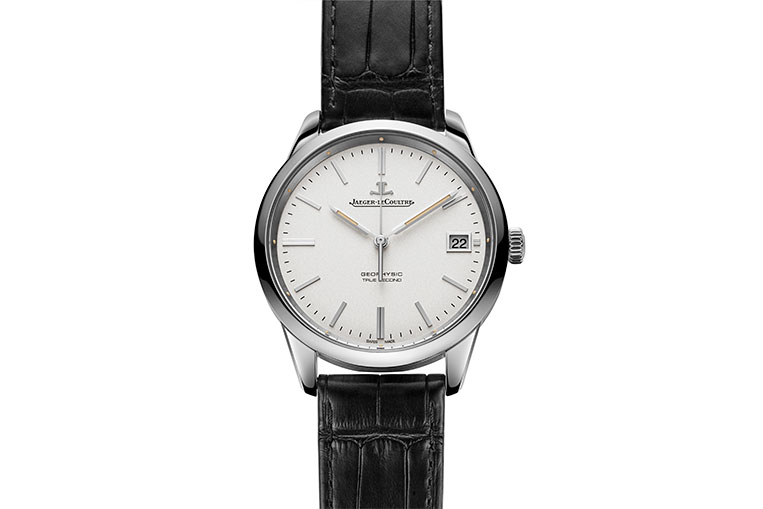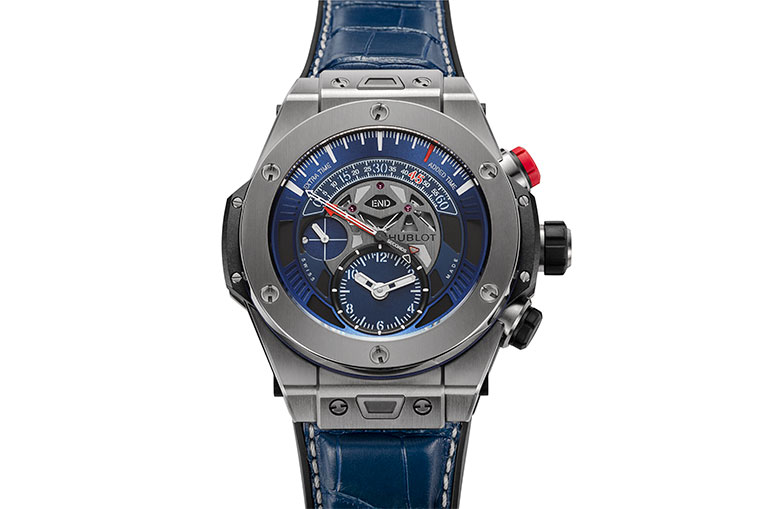Feature: Useless or Not? 3 Watch Features
We’ve covered many of the varied and interesting complications watchmaking has to offer, from the humble self-changing date to the mighty perpetual calendar, but despite the vast iterations of features we have seen, there are always a few more that we haven’t—and some of them are quite unusual. Here are three of them—the question is, are they useless or not?
Jaeger-LeCoultre Geophysic True Second 8018420
What seems like quite a simple, straightforward watch from Jaeger-LeCoultre actually hides quite a few surprising little secrets, but before we get to the potentially useless complication, it’s important to understand a little bit more about this watch and why it’s called the Geophysic.
For that we need to go back to 1958, to Jaeger-LeCoultre’s 125th birthday. Not only was the watchmaker celebrating a century-and-a-quarter of business—it was also International Geophysical Year. This wasn’t just some throwaway excuse to sell shoddy merchandise like Valentine’s Day, St Patrick’s Day or Be Kind To Lawyers Day, it was an initiative across sixty-seven countries to encourage awareness of the field of geophysics.
This was an opportunity right up Jaeger-LeCoultre’s street, and so the company built a watch that fulfilled the requirements of all the disciplines of geophysics—seismology, electromagnetism, glaciology, radioactivity and solar activity—and called it, rather pointedly, the Geophysic. The Geophysic was shock proof, antimagnetic, resistant to cold and heat, and chronometer rated, its movement based on a military-grade calibre used in Royal Air Force watches.

This Geophysic True Second takes the high-tech influences of the original and pushes them even further, incorporating elements from Jaeger-LeCoultre’s concept Extreme LAB watches into its calibre 770—including the Gyrolab balance, an alien looking thing that removes mass from the balance wheel for reduced friction with air.
But that’s not what we’re here for. Where the original Geophysic had hacking seconds—the second hand pauses when the crown is pulled—the Geophysic True Second has something a bit more complex: true- or dead-beat seconds.
What this boils down to is a quartz-like one tick per second rather than a typical eight. Seems rather pointless, but where a quartz watch only ticks once per second to prolong the life of the battery, the Geophysic has a different motivation for its quirk: back when time was set or regulated from a mechanical source, the true beat made it easier to accurately sync with a reference. Being that the Geophysic was designed as a scientific tool, it seems appropriate—but what do you think, useful or useless?
Hublot Big Bang Unico Bi-Retrograde Paris Saint-Germain 413.NX.1129.LR.PSG15
For a long time, Hublot was known for being one of the only manufacturers in the high-end game without an in-house movement. The demand for in-house movements has grown in recent years, and so in 2013 Hublot inaugurated the Unico into its collection, a completely manufacturer designed-and-built chronograph movement of 330 parts.
And what better use for a shiny new chronograph movement than to time the football? If you can’t tell your throw-ons from your penalty corners, then perhaps this watch won’t be for you, but if you’re the kind of person who can explain the outside rule with one hand behind your back, then pay attention—you’re going to like this.
Hublot has demonstrated unbelievable tekkers by further developing the Unico movement into a bi-retrograde chronograph with a John Jensen-style hat trick of features: minutes, seconds and halves. But as the name suggests, this is no ordinary chronograph, because each of the two hands has retrograde capability, returning to zero automatically when they reach the end of their travel.

So, if you’re on the football court keeping track of play, you’ll need to know what’s going on to the minute. That’s why the Bi-Retrograde’s chronograph specifically has a sixty-minute counter, divided into fifteen-minute sections, to monitor each half of play, plus added and extra time.
If you didn’t know, football is divided into two forty-five–minute halves of play, with added time at the end of each half for stoppages and fifteen-minute intervals of extra time played at a draw in knock-out competitions. It’s a lot to keep up with, but Hublot’s got you covered. Start the chronograph and you’ll see a ‘1’ appear below the bi-retrograde display, indicating the start of the first half. Stop and reset the chronograph and half time is indicated. Once the soccermen have finished their half-time lemons, it’s back onto the court for the second half, plus any extra time—and then the game ends.
It’s a finicky process made more simple for professional and amateur football umpires alike. But what do you think of the bi-retrograde football complication? Three yellow cards and you’re outta there, or back of the goal?
IWC Aquatimer GST Deep One IW352701
The Aquatimer GST Deep One from IWC is no ordinary dive watch. ‘GST’ may stand for an underwhelming ‘gold, steel and titanium’ but don’t let this fool you into thinking that the lightweight titanium case and bracelet is all the Deep One is bringing to the table. And the Jaeger-LeCoultre calibre 891 that replaces the range’s standard ETA; it’s interesting, desirable even, but that’s not what makes the Deep One Special either.
It’s a surprisingly simple watch to behold, acting rather coy about its hidden talent. It has three points of control on the case, but it’s no chronograph. It has a great big triangle hand, but it’s no GMT. There’s a rotating internal bezel, but it’s no plain Jane dive watch, either.
Just outside of the timing bezel is what looks like another timing bezel, but despite the overlap of units, it’s something else entirely. Clue’s in the name, ‘Deep One’; this watch is all about measuring depth. Thanks to the Richard Habring-designed Bourdon tube inside—a thick assembly that necessitated the use of the slender calibre 891—the Deep One can mechanically measure and even record depth.

As the watch descends, water enters this tube and it begins to straighten, a motion represented on the dial with the advancement of the triangle-tipped hand. But there’s more: as the watch resurfaces, another hand is revealed, which stays in place as a log of the maximum depth reached. The cleverly hidden pusher in the bezel rotation crown resets it back to zero. And there’s more still: the secondary hand can also be used to set a maximum depth alert. Position it with the third crown and you’ll know when you’re reaching your limit.
It’s a demonstration of the engineering nous founder F. A. Jones committed to when he created IWC back in 1868, a cleverly complicated yet simple-to-use device that rewards as much in its revelations as it does in action. Useful, however? You decide.
Watchmaking is the kind of passion that just keeps on giving. There’s always a new stone to upturn, a new avenue to venture down, and whether or not every adventure into knowledge is as fruitful as you’d hope, you’re sure to enjoy yourself doing it.
Looking for a Jaeger-LeCoultre watch? Click here to shop now
Looking for a Hublot watch? Click here to shop now
Looking for a IWC watch? Click here to shop now



